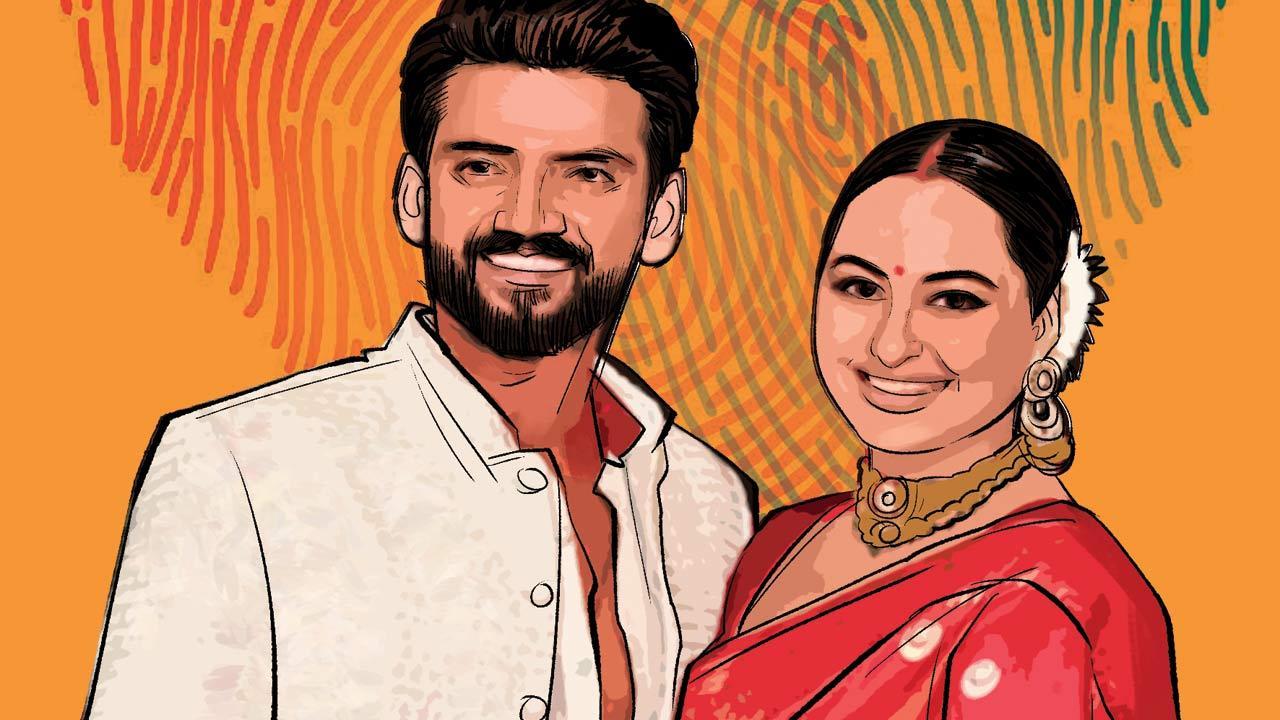
Sonakshi Sinha’s wedding charmed so many people for so many reasons. There are who get dewy-eyed at weddings as the true culmination of romance(I am not one of them). Others loved the unpretentious looks on the bride and groom, so very pre-Dharma weddings. What’s not to love about a classic red and gold Banarsi, that too on a classic Indian beauty like Sonakshi with her nayika eyes, her curvaceous body, her centre-parting and most of all, her self-contained womanly air, with nary a trace of coyness.
Sonakshi carried herself with lightness through the proceedings. There was none of the usual overwrought and fussy air of weddings with their designer outfits, whether simple or sumptuous, the elaborate air which signals that marriage has heightened significance, that it is almost an achievement. These celebrations seemed youthful, modern, full of fun, not decorum or sentimentality, best expressed in the many dance videos doing the rounds —dancing with Rekha in gold, dancing with Kajol in guffaws. The sheer presence of unconventional, or let’s just say it, diva types, including Tabu in rose gold gharara, felt like a feminist Farah Khan song.
But the most unusual element of this affair was its air of autonomy. Sonakshi and her partner, Zaheer Iqbal, sent out the invitation on their own behalf, and had a registered marriage in her own flat. There was no “beti ko vida karna” vibe, no teary parents and smiling sasu ma taking centre stage. This was the wedding of someone quite her own woman, choosing her own someone. It was not a transfer of ownership from daughter to wife or daughter-in-law—such gestures weren’t even vestigially present. Sister was doing it for herself.
The questions were present all along—did her parents not approve? Were her brothers not coming? Was it because it was a Hindu-Muslim wedding? But Sonakshi managed to never let it take over the narrative. The wedding showed us how much things have changed in how women imagine their lives (Jai feminism). But equally, we see how old ideas of control surface violently, and take new shapes.
Threats and vicious comments about love jihad followed, making you wonder about the dark and joyless inner world of bhakts. One person tweeted “Just 3 days after the marriage, Sonakshi Sinha has no mangalsutra, no sindoor, no chura in hands. To fool Hindus, they’ll say she hasn’t converted. But she’ll be a crypto-Muslim going forward. Look out for hijab pictures”. Such orgiastic negative fantasies and such obsession with women wearing the marks of marriage.
The autonomy that Sonakshi exhibited is the very thing that such conservatives fear. Love jihad is rooted in the idea that women belong to a community— that their identity as people is secondary to every other identity, from religion to caste to family—and the fear that as women make their own choices, they threaten the primacy of men, their right to decide for others. If Indian men cared so much about women’s rights, the government would not say that criminalising marital rape threatens the sanctity of marriage. These graphic fantasies of conversion and control are simply their own desires given dark forms.
In such a world Sonakshi’s real beauty and coolness is not only about choosing her love. It’s about choosing to love herself as a full-grown woman. So, say Shava shava Sona.
Paromita Vohra is an award-winning Mumbai-based filmmaker, writer and curator working with fiction and non-fiction. Reach her at paromita.vohra@sportify360.com



